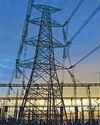In my interactions with so-called stock market experts over the years, I have often been told that since April 1979, the BSE Sensex—India's most popular stock market index—has delivered a return of 17-18% per year.
Now, the idea behind such statements is primarily to establish that investing in stocks earns a superior rate of return in comparison with other asset classes. From April 1979 to October 2024, the Sensex has given a return of 15.2% per year. Add a dividend yield of 1-1.5%, and we are looking at a rate of return of slightly less than 17% per year, largely in line with what the stock market experts talk about.
Of course, it can be argued that the Sensex fell sharply in October and hence the returns are slightly lower. From April 1979 to 26 September 2024, when the Sensex peaked, the annual return worked out to around 15.5% per year. With a dividend yield of 1.5%, we arrive at a return of 17% per year.
There are two major problems with this argument. First, it does not tell us that a bulk of these returns were made before 1992, when most of us investing in the stock market right now were either not around or were not old enough to be buying stocks.
So, how do things look if we adjust for this deficiency? We need to consider the returns delivered by the NSE 500 Total Returns Index (TRI), which takes the dividend yields of stocks into account while calculating returns. Also, this index is much broader than the Sensex and is thus a better representation of the stock market.
この記事は Mint Mumbai の November 20, 2024 版に掲載されています。
7 日間の Magzter GOLD 無料トライアルを開始して、何千もの厳選されたプレミアム ストーリー、9,000 以上の雑誌や新聞にアクセスしてください。
すでに購読者です ? サインイン
この記事は Mint Mumbai の November 20, 2024 版に掲載されています。
7 日間の Magzter GOLD 無料トライアルを開始して、何千もの厳選されたプレミアム ストーリー、9,000 以上の雑誌や新聞にアクセスしてください。
すでに購読者です? サインイン

World Bank calls for reforming skills training in India
India must make a coordinated effort to reform and rebrand vocational skill training, besides aligning education with the job market, to leverage its demographic advantage to meet the $5-trillion target for its economy, the World Bank said.
FCPA cases take long to conclude after indictment
For investors keen to know the fate of billionaire Gautam Adani's indictment by US authorities, the watchword is patience.

Short-covering, relief rally add ₹7.27 trillion wealth
Markets up 2.39% to hit the highest in six months, a day after Adani's indictment

Wetter monsoon slows pace of adding new transmission lines
India's addition of new power transmission lines fell by half over a year earlier in the April-October period as a wetter-than-usual monsoon slowed work.

COP29's $1.3 tn fund plan disappoints Global South
The 29th edition of the UN climate change conference in Azerbaijan emerged from a deadlock with an annual climate finance goal of $1.3 trillion for developing countries, much to the disappointment of the Global South.

Jaguar rebrand is pink, diverse and doesn't feature any cars
Luxury automaker Jaguar is betting that a colorful and youthful rebrand will help it successfully launch fully into the electric-cars market.
Services up as manufacturing slows in Nov
The HSBC Flash India Services PMI was at 59.2 in Nov from 58.5 in Oct; manufacturing PMI fell slightly from 60.4 to 60.2

MSMED may protect medium firms too
The Centre may consider including medium enterprises for the protection granted under MSME Development (MSMED) Act, 2006, to resolve payment disputes.

Europe boosts Indian textile exports in FY25
Demand for Indian handloom, apparel partly fuelled by Bangladesh crisis
RBI nudges banks to cut speculative bet in rupee
The Indian central bank, in a rare move, instructed some banks to cut their long positions on the dollar-rupee pair on Friday, seeking to curb speculative positions with the currency at a record low, four bankers familiar with the development told Reuters.